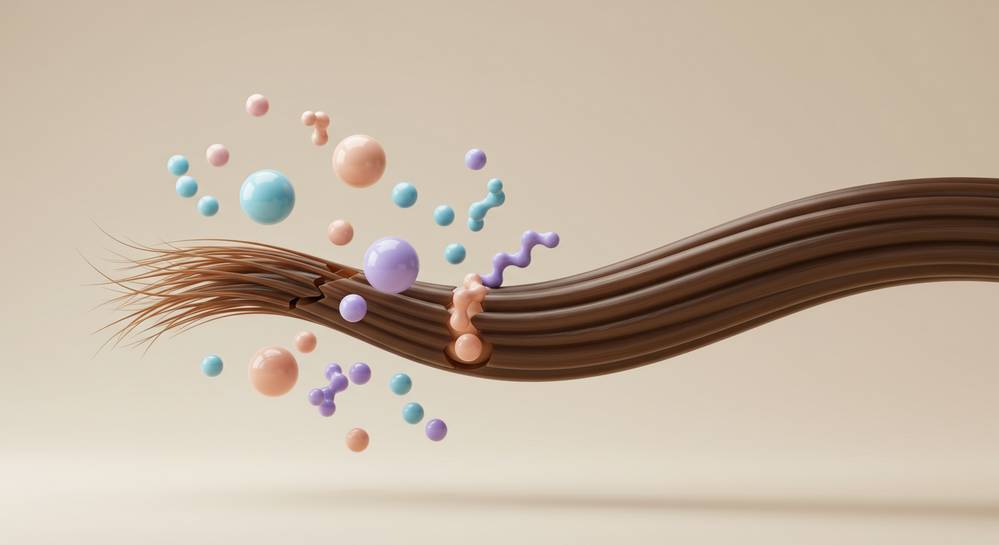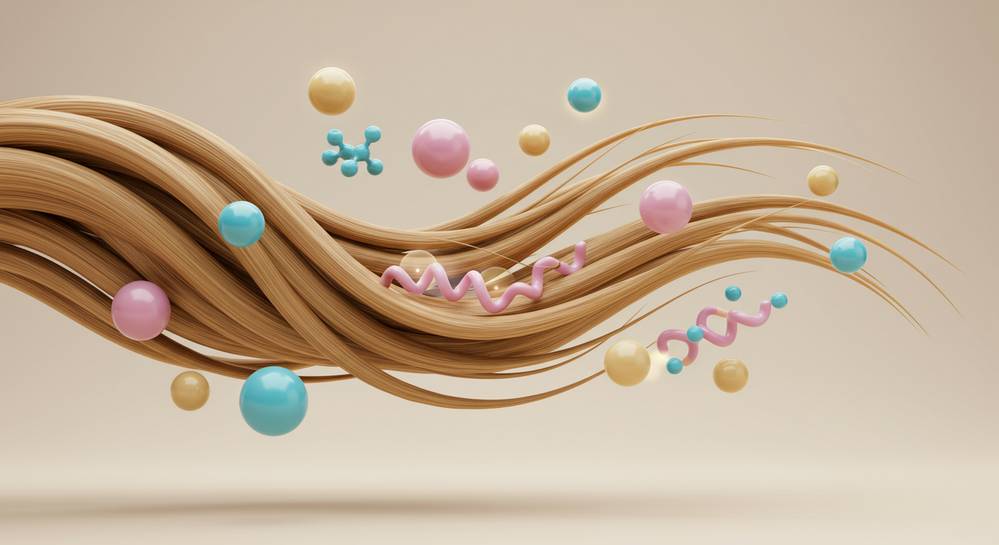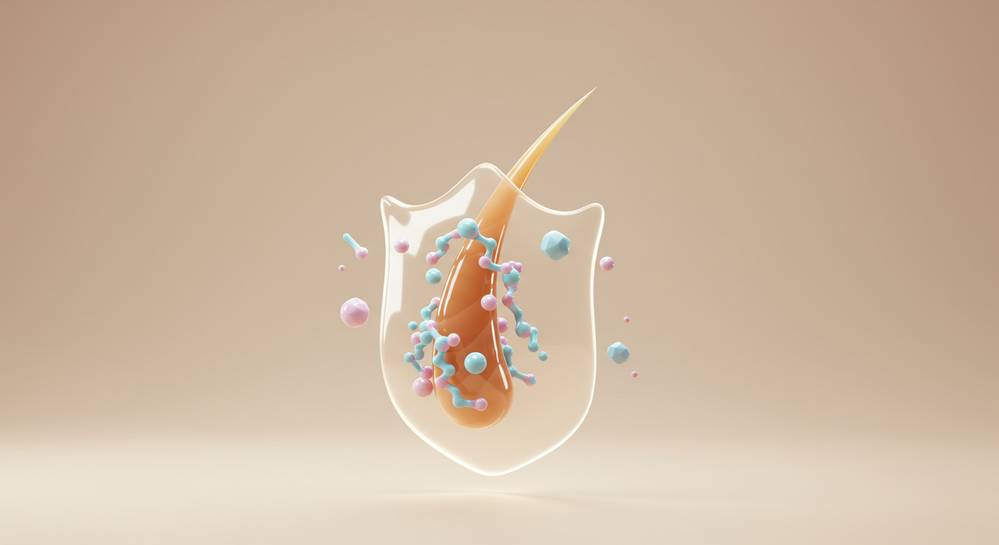Is your hair feeling brittle, mushy when wet, or snapping with minimal tension? These are common signs of protein loss from chemical treatments or heat damage. This complete protein hair treatment guide will walk you through how to identify your hair’s needs, choose the right product, and apply it correctly to restore strength and vitality to your strands.
What is a protein hair treatment and who needs one

What a protein treatment does for hair
Hair is primarily made of keratin, a strong protein. Heat styling, chemical processes, and environmental stress can damage this structure, leaving hair porous and weak. A protein treatment works by depositing hydrolyzed proteins onto the hair shaft. These proteins fill in the gaps in the cuticle, temporarily reinforcing the hair. This process restores strength and improves elasticity, making hair more resilient against damage.
Signs your hair is asking for protein
You might need this restorative care if your hair shows specific distress signals. Recognizing these signs is a key part of any effective protein hair treatment guide. Look for these indicators:
- High porosity: Your hair absorbs water quickly but also dries fast, often feeling frizzy or tangled.
- Loss of elasticity: Healthy wet hair should stretch slightly and return to its shape. If it snaps easily, it lacks protein and is prone to breakage. Explore our recommended products to stop hair breakage.
- Mushy texture: Hair that feels gummy or overly soft when wet has lost its structural integrity.
- Chemical damage: Recent coloring, bleaching, or relaxing services strip away natural proteins, requiring replenishment.
The different types of protein treatments available

Not all protein treatments deliver the same results. They vary in strength and purpose, so matching the treatment to your hair’s damage level is crucial. Using a formula that is too strong can lead to stiffness and breakage. This protein hair treatment guide breaks down the main categories to help you choose the right option for your hair needs.
Light treatments for maintenance
These are the most gentle options, often found in daily conditioners or weekly masks. They contain low concentrations of proteins like silk amino acids or hydrolyzed wheat protein. These products are designed for regular maintenance and are perfect for hair with minimal damage. They also work well as a preventative measure to keep healthy hair strong and resilient.
Deep reconstructors for repair
This is the most common type for addressing noticeable damage. These intensive formulas are meant for use every four to six weeks. They contain concentrated proteins that penetrate deep into the hair shaft to repair its internal structure. This category is ideal for hair that has been weakened by chemical services like coloring or bleaching, or from excessive heat styling.
DIY masks for a natural boost
For a mild and natural alternative, you can create a treatment at home. Ingredients like Greek yogurt, eggs, or avocado are rich in proteins and nutrients. While not as potent as commercial formulas, these masks are excellent for a gentle protein boost between more intensive treatments. They provide surface-level conditioning and are a great option for those who prefer natural ingredients.
How to perform a protein treatment at home step by step
Applying a protein treatment correctly is crucial for achieving the best results while avoiding potential stiffness. The right technique ensures your hair absorbs the strengthening benefits without becoming brittle. This protein hair treatment guide provides a clear, step-by-step process for an effective at-home application. Following these instructions carefully will help you restore your hair’s integrity safely.
- Clarify your hair first: Start by washing your hair with a clarifying shampoo. This step removes any product buildup, allowing the protein treatment to penetrate the hair shaft effectively. Do not use a conditioner yet.
- Apply to damp hair: Gently towel-dry your hair until it is damp, not soaking wet. Section your hair and apply the protein treatment evenly from roots to ends. Ensure every strand is coated, using a wide-tooth comb for even distribution.
- Allow it to process: Cover your hair with a plastic cap. The trapped heat helps the treatment penetrate more deeply. Follow the product’s timing instructions precisely, as leaving it on too long can cause brittleness.
- Rinse and moisturize: Rinse the treatment out thoroughly with lukewarm water. It is essential to immediately follow up with a hydrating deep conditioner or hair mask. This critical step restores moisture and softness, balancing the strengthening effect of the protein.
Aftercare and common mistakes to avoid

Maximizing the benefits of your protein treatment involves proper aftercare and avoiding common pitfalls. The biggest mistake is creating an imbalance between protein and moisture, which leads to protein overload. This condition makes hair feel rigid and brittle. Following a smart aftercare routine is a crucial part of any protein hair treatment guide.
Best practices for aftercare
- Balance with moisture: In the weeks following your treatment, focus on using moisturizing shampoos, conditioners, and leave-in products.
- Reduce heat styling: Give your newly strengthened hair a break from high heat to preserve its integrity.
- Schedule consistently: Use intensive treatments every 4 to 8 weeks, not weekly. Listen to your hair; if it starts to feel stiff, scale back.
Common mistakes to avoid
- Overusing protein: Applying strong protein treatments too frequently is the most common error. This leads to brittle hair that is prone to snapping.
- Skipping the moisturizing conditioner: Protein strengthens, but moisture provides flexibility. Always follow up with a deep moisturizing conditioner.
- Leaving the product on too long: Adhere strictly to the recommended processing time. More time does not equal better results and can cause damage.
A protein treatment is a powerful tool for restoring the health and structure of damaged hair when used correctly. By identifying your hair’s needs and following a balanced routine of protein and moisture, you can effectively rebuild strength and elasticity. For more personalized tips and in-depth beauty guides, continue exploring Beauty Beat Blog.